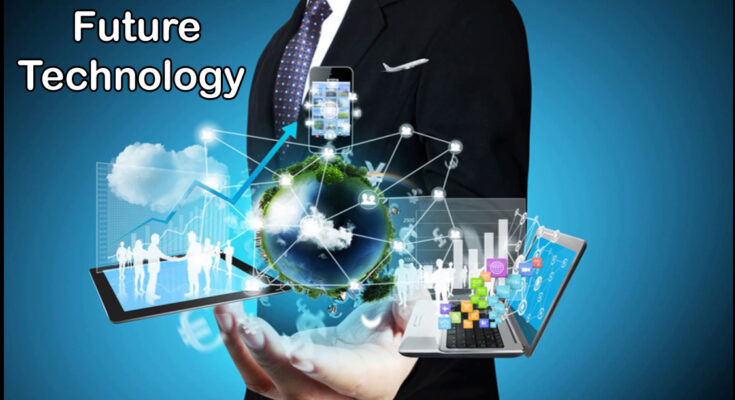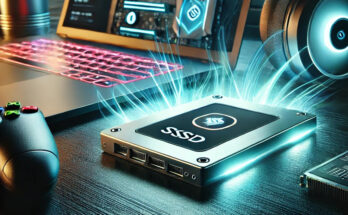The retail market, production, leading future technologies, communications, and other businesses are all growing due to the rapid advancement of technology. Different technologies have advanced with improved improvements to serve people in their daily tasks. Emerging technologies allow us to promote and facilitate our imperfect human situation.
So, if you are interested in the top 10 predictions for the future of technology, you are at the right place. Let’s dig into it.
Quantum computing
It is predictable to be the direction of computers. The time is yet future. The creation to make it simple to tackle the difficulties. The power has not yet arrived. Although it has a price, it is already usable by some vehicle manufacturers. These computers employ connectivity and superposition, two quantum mechanical phenomena, to solve computing issues. In contrast to supercomputers, the computer employs theoretical physics to save information and perform computations.
Since the rise of the COVID-19 pandemic, quantum computers using to discover treatments and possible vaccinations. It enables scientists working on cutting-edge technologies to identify trends identical to covid-19, which might speed up the production of antibodies or slow down the spread of innovation in 2025.
AL (Artificial Intelligence)
The field of art is a growing innovation to add to the roster as artificial intelligence learns to do tasks just as effectively as humans. OpenAI researchers have developed software that can produce graphics with just spoken inputs. You may search for “a cat wearing a cowboy hat in the rain” and get tons of unique pictures that suit the bill.
Even the artistic style in which your request is given back is your choice. But there are still problems with the technology, as when you provided the wrong instructions for drawing cartoon figures.
The group behind the Dall-E innovation is now working on its second generation and has more development planned. The creation of art installations, rapid, creative images for business purposes, and a change in how ideas come up on the internet are all possible uses for this technology soon.
Digital Twins
Digital twins are computer replicas of real-world things that make administration and future predictions easier. It provides a view of what is occurring with property resources in real-time. They may monitor complicated objects like vehicles, factories, buildings, and other machinery. It will change numerous procedures and alert users to potential failures, accidents, or operational irregularities.
Augmented Humans
A being having the capacity to activate genius talents, extraordinary powers, and ecstatic experiences is an “augmented human.” Through technology, our physical and mental capabilities are improving. Therapeutic techniques, genetic manipulation, instruments for cognitive improvement, and bodily augmentation are all used to boost. The following 20 years will see more changes in humanity due to emerging leading technologies.
Blockchain
Bitcoin is among the blockchain. Blockchain is the underlying software that powers Bitcoin, Cryptocurrency, and all other virtual money. The four main categories of blockchains are available, personal, mixed, and federated Blockchain technologies. from 1.5 billion in 2018 to 15.9 billion people are increasing by 2023. Blockchain technology may be accessible by public and private activities, including record keeping and internal business operations.
IOT
It is a vast network of people and things that gather and exchange information on how they are using as well as the environment around them. As more Smart devices are connected, it may provide a company with cost-saving procedures and valuable information. The “internet of things” is a collection of instruments and related items that can wirelessly gather and transmit files without human involvement.
IoT has developed into one of the most significant 21st-century innovations over the past decade. Now, we can use tiny gadgets to link commonplace items like kitchen utensils, card heaters, baby monitors, and many others to the web. In the next ten years, significant players in low-cost computers, digital technologies, and physical objects will all be able to exchange and gather data with little help from humans.
3.D printing
A digital document is necessary to create three-dimensional solid items via 3-d printing or rapid tooling. All 3D printing procedures needed a combination of equipment, programming, and substances to function. Since the late 1970s, businesses have utilised 3D printers to design variables as part of their design process. Since the material is put to the print board in precise measurements to generate the final print using emerging technologies, 3D printing is known as additive production.
We add stuff instead of subtractive manufacturing with additive manufacturing instead of eliminating it. In doing so, raw materials are safeguarded. We can easily construct a complex structure. It does aid in the production of models that formerly had design limitations.
Chatbots
A chatbot is a software that allows you to have text-based or message conversations with real people online. You use a chatbot in conversation systems for several reasons, such as customer service, request routing, or data collecting. It is the most cutting-edge and hopeful manifestation of human-machine interaction. Chatbots provide businesses with a method to continually assist and serve their consumers without having to hire unlimited amounts of staff.
Natural Language Processing
NLP focuses on algorithms that can recognise and comprehend spoken human language. It includes related activities like translating, voice recognition, and the creation of natural language comprehension. NLP systems would significantly improve because of the different languages spoken worldwide. As part of current NLP research, chatbots constantly communicate with people. A crucial component of artificial intelligence is natural language processing. Using lexical, semantic, and synthetic analysis assists in determining the user’s purpose. NLP aims to read, comprehend, and interpret human language helpfully.
Neuromorphic Computing
First, the rise of deep understanding utilises methods that rely on neurons. Additionally, scientists use silicon devices that may directly integrate neural network design—the design of vessels to resemble the brain physically. A typical configuration must transfer data between the central Processing Unit and storage units. Predictions of new technologies available in the next ten years will result in time delays and energy use. A Neuromorphic chip may manufacture synapses as necessary, saving energy and time. Data is processed and stored in the chip analogously.




